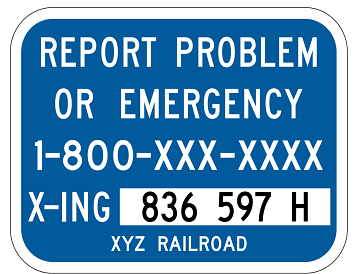I have a vague recollection that at one point it was common that emergency dispatchers would call railroad dispatchers in a situation like this, but I have no idea how that would actually work in practice. I also can't really imagine a railroad ever giving anyone, even emergency vehicles, permission to go around lowered gates.One would think there would be a communication system between trains and emergency response entities. Kind of like Air Traffic Controllers (maybe this already exists?) that would be able to assist in these types situations.
Lurking in the background here is a pretty straightforward "false alarm" issue: the only reason it would ever make sense for an emergency responder to bypass the gates is if they believe it's a "false alarm", in that the gates are lowered unnecessarily (or are remaining lowered unnecessarily). And yes, even then, it would not be advisable, but one can imagine a well-meaning individual feeling like they had to make a judgement call if they a) know that there is an urgent crisis on the other side of the tracks, and b) believe that the gates may be lowered unnecessarily: in that scenario, they would be 100% sure that (a) is true, since someone called 911 and spoke verbally; meanwhile, their confidence in (b) might be less than 100% if, for example, they've seen the gates lower in the past without apparent reason.
And… that’s not totally implausible. Not saying it’s likely, but every alarm system will occasionally have false positives. It’s the “boy who cried wolf” danger of “safety theater”: if users lose confidence in the accuracy of the system, inevitably they will take that into consideration during a crisis, for better and worse.
(Just to be very very clear: no one should ever go around lowered gates, unless, like, they are in direct contact with the dispatching railroad and they have clear line of sight, taking into account crossing time and likely speed of trains. That’s an exceptionally rare scenario that’ll never happen for most people. So, practically speaking, no one should ever go around lowered gates.)





